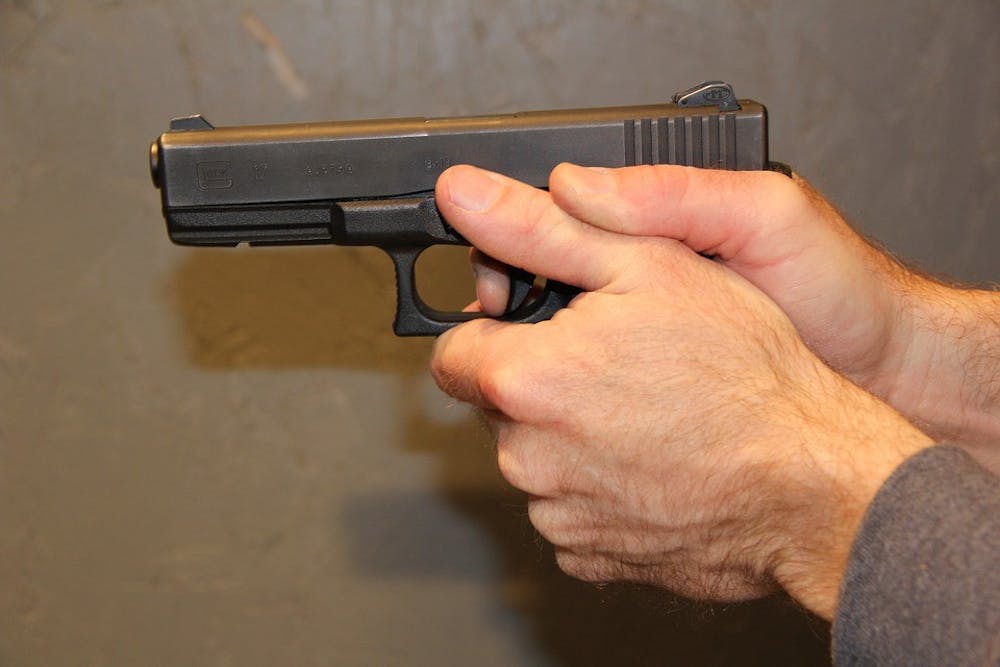The majority of mental health professionals believe firearm issues are greater among mentally ill people, yet new studies suggest these professionals may not posses the training and the ability to play a role in preventing firearm trauma themselves.
Of all the people who die of firearm violence, most die from firearm suicides. Of those who die of firearm suicides, the majority — nearly 75 percent — may have a diagnosable mental disorder.
Each year more than 41,000 individuals take their own life, according to the Centers for Disease Control and Prevention. Suicide is the 10th leading cause of death among adults in the U.S. and the third leading cause of death among people aged 10-24.
Through research and review of scientific literature, one Ball State professor and University of Toledo professor concluded this could be prevented.
In the article "Firearm Violence by the Mentally Ill: Mental Health Professionals' Perceptions and Practices," Jagdish Khubchandani, an assistant professor of community health education at Ball State University and James Price, a professor emeritus of health education and public health at University of Toledo, concluded mental health professionals need more training on firearms issues.
According to the study, both the public and many politicians might have unrealistic expectations of mental health professionals' abilities to determine which patients are likely to be involved in firearm violence in the future.
Khubchandani said change is necessary within the mental health care profession to lower the amount of firearm deaths and the amount of deaths from suicide — which could include screenings and counseling for future prevention.
“These are preventable deaths if individuals receive mental health care and if appropriate suicide and violence risk assessment is conducted by mental health professionals,” Khubchandani said. “However, most American doctors and nurses in the field of mental health are not trained to counsel patients or conduct proper risk assessments for firearm violence.”
A doctor’s judgment on the overall safety of those with mental illness to posses a gun is also a considerable factor, he said.
Khubchandani compared this to the recent act of gun violence that happened earlier this month at a night club in Orlando, Florida, when a man who pledged allegiance to the Islamic State gunned down 49 people, making it the deadliest mass shooting in the United States.
“We are now living in strange times. Look at what is happening in Florida,” Khubchandani said. “A few years back a doctor asked a couple — parents — in Florida if they had guns at home, which was a routine inquiry to protect children from dying of unintentional shooting. There was widespread criticism of the doctor and it was proposed in Florida that doctors asking about guns at home from patients could have their medical licenses canceled and they should not ask about guns.”
Khubchandani said according to the New England Journal of Medicine, in 2010, gun-related injuries accounted for 6,570 deaths of children and young people ages 1 to 24, which included seven deaths per day among people 1 to 19 years.
The journal also reported gun injuries caused twice as many deaths as cancer, five times as many as heart disease and 15 times as many as infections.
Looking at firearm violence as a political issue has caused serious problems throughout the country, the health professor said.
“The American public is forced to view firearm violence as a political issue, and we lost so many lives due to this approach," he said. "Firearm deaths are preventable, and public health approach should be acquired to this problem that is pervasive and relentlessly plagues the society. If mental health disorders are treated well and physicians are trained well, we could see a modest decrease in firearm suicide rates.”
Another obstacle besides politics is changing the way society portrays people with mental illnesses.
“Politicians and the public believe that we have gun violence problems due to mentally unstable individuals, or those with mental illnesses," Khubchandani said. "I found it amusing that we as a nation could blame the 15-20 percent of Americans living with mental illness for [the] majority of the gun violence."
Knowing people with mental illnesses and having researched the subject, Khubchandani said he doesn't think it's fair to say these people are any more violent than people without mental illness.
In fact, the National Center for Health Statistics said fewer than 5 percent of around 120,000 gun-related killings in the United States between 2001 and 2010 were committed by people diagnosed with mental illness.
Khubchandani said he believes the focus needs to be not on placing blame, but on spreading awareness and education among the health care systems to stop future acts of gun violence, specifically suicide.
“Most of the firearm deaths in the U.S. are suicidal in nature," he said. "If mental health disorders are treated well and physicians are trained well, we could see a modest decrease in firearm suicide rates."





